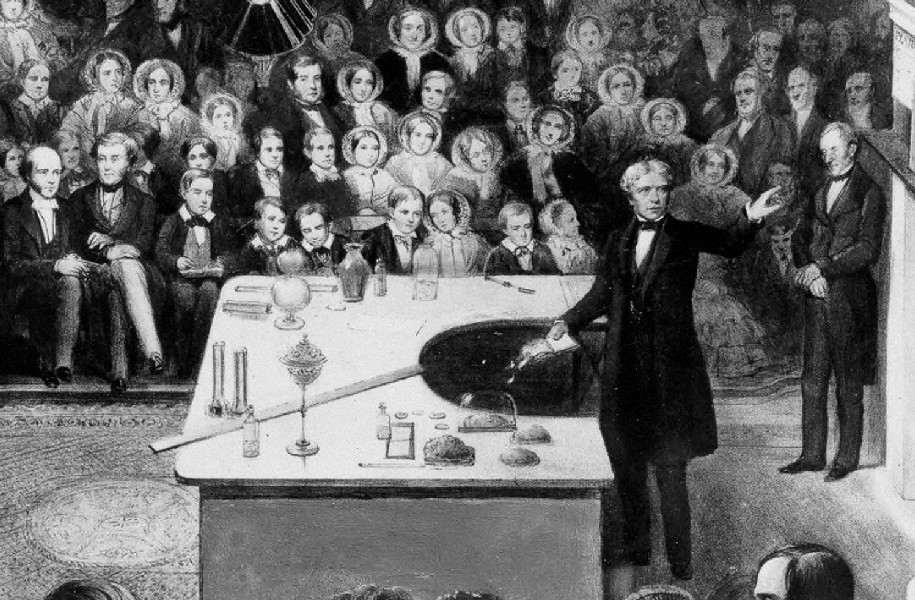
December 24, 2012, by Brigitte Nerlich
Royal Institution Christmas Lectures: Some family memories
It will soon be time for our family to sit down and watch the Royal Institution Christmas Lectures. This is a ritual that is almost as important as Christmas itself.
When I came to Oxford in 1985 from Germany, having studied French and philosophy. I had never heard of the Christmas lectures and ‘science’ was not something I felt I knew much about. I had just written my PhD about the history of French linguistics (1780 to 1930) which had drawn me tangentially, and initially quite reluctantly, into some aspects of the natural and social sciences, as I had to delve into comparative anatomy (which inspired comparative linguistics), biology and evolutionary theory (which inspired historical linguistics), geology (which inspired linguistic uniformitarianism), psychology (which inspired linguists to look at the mental backdrop to language use and language change) and sociology (which inspired linguists to look at the interactions between language and society). So there was a little spark of interest in all things sciency that just needed to be ignited.
In 1987 I married my husband, a psychologist, we moved to our new home in Nottingham in 1988 and, appropriately, we watched our first Christmas lecture series together that year entitled “The future of the home”. And boy did our ramshackle old house need that future. And we are still working on the update, even now!
In 1991 our son was born. This is the first lecture series I remember quite well, as watching the lectures was so relaxing between the feeding and changing and all that sort of thing. That year they were given by Richard Dawkins and entitled ‘Growing up in the Universe’ – again quite an appropriate title! Our son is now a gangling six-foot-two physics student with quite an interest in cosmology! However, in 1991 I still didn’t see myself as in anyway related to ‘science’. I was just writing my first real book at the time on Semantic Theories in Europe.
Things changed after about 1999 when I was asked to participate in a Leverhulme funded research programme, which led to the foundation of the Institute for Science and Society. At the same time our son was starting to show a real interest in science and so he and I grew up together, him soon outstripping me in my meagre grasp of what was going on in cloning, GM, stem cells, nanotechnology and so on. We also began to discuss the Christmas lectures instead of just watching them, finding that some were really great and others not (I won’t say which!). We saw them shift from one channel to another and we also observed how they morphed over time, becoming less bench-based and more multi-media (which again, sparked some discussion about pros and cons).
My husband has just looked through the draft of this blog post, which has set him off reminiscing too (Eric Laithwaite firing metal plates across the room from his linear induction motors; Christopher Zeeman turning us on to Catastrophe Theory; Colin Blakemore who had supervised his undergraduate project, and so it goes on).
So in a few days time I’ll be sitting down again, 24 years after having watched the first round of Christmas lectures, and watch Peter Wothers present the Modern Alchemist. Over time I have morphed from a mainly artsy person to an interdisciplinary nomad and I wouldn’t have it any other way. And the Christmas lectures have been with me all the way.
For those who want to know more about The Royal Institution lectures and public engagement and science communication, I recommend this video from the Open University.
2013: The Life Fantastic (Alison Woollard)
2014: Sparks will fly: How to hack your home (Danielle George)
Image: Wikimedia Commons

[…] post that tentatively embraced this new medium of communication and I ended it by bringing my whole family into it. I hope that over the next year, the Making Science Public blog will continue to thrive and […]